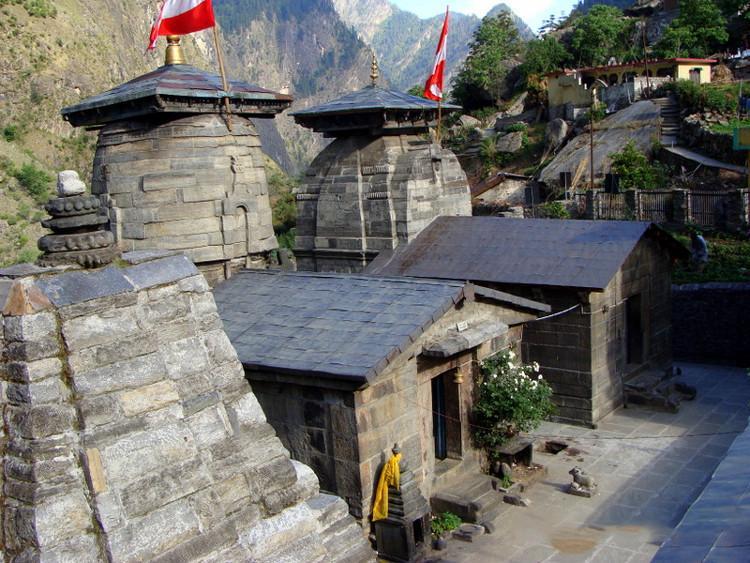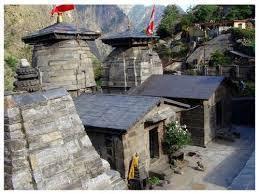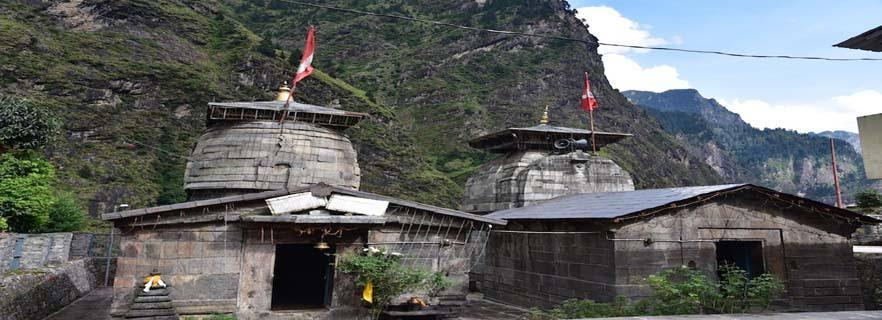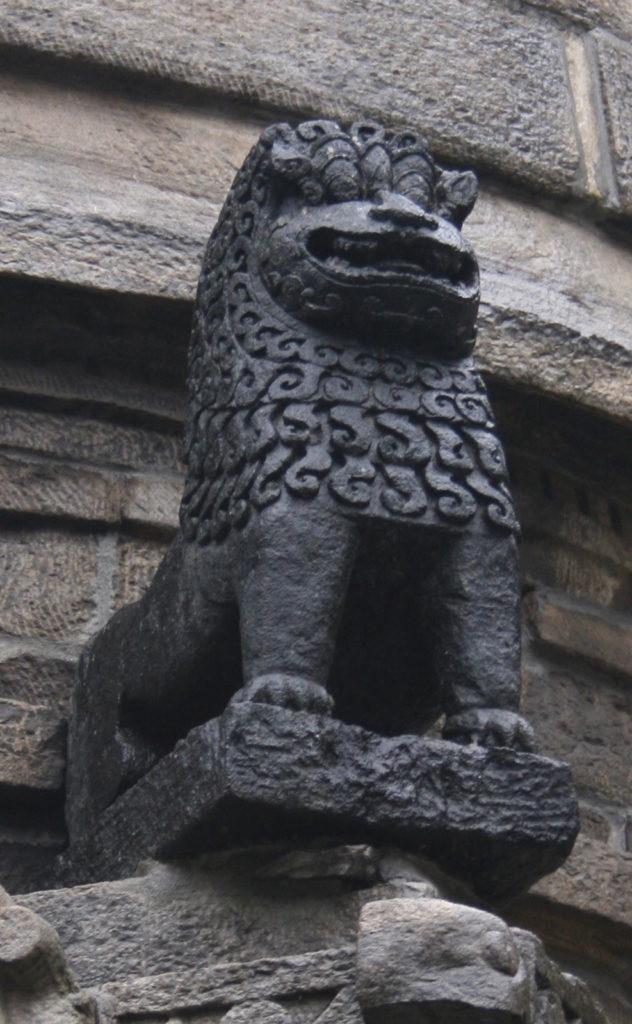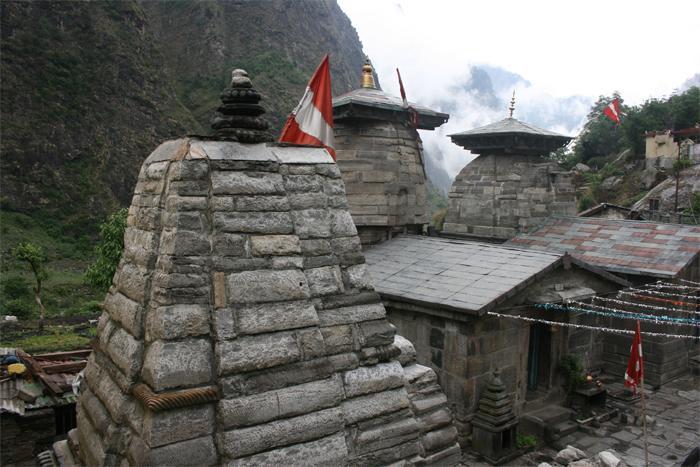The Yogdhyan Badri Temple is as old as the temple of Badrinath. Pandukeshwar is 24 kms from Joshimath, it has the Yogdhyan Badri temple one of the panch badri . The image here, in a meditative posture, is worshiped as at Badrinath.
According to the myth, the Pandavas made over Hastinapur to Raja Parikshit and retired here. Also, king Pandu, the father of Pandavas had spent his last days doing penance here before his Nirvana, and hence the name. Some famous copper plates carrying old inscriptions, providing valuable information on the history of the temple and early Katyuri Rajas have been found here. The surrounding region is Panchal Desh better known as UttarKhand. Surya Kund, which is on the top of the Milam glacier, is a hot water spring. Here Kunti is said to have given birth to Karna, fathered by Surya. Pandu married Kunti at Pandukeshwar near Sri Badrinath.
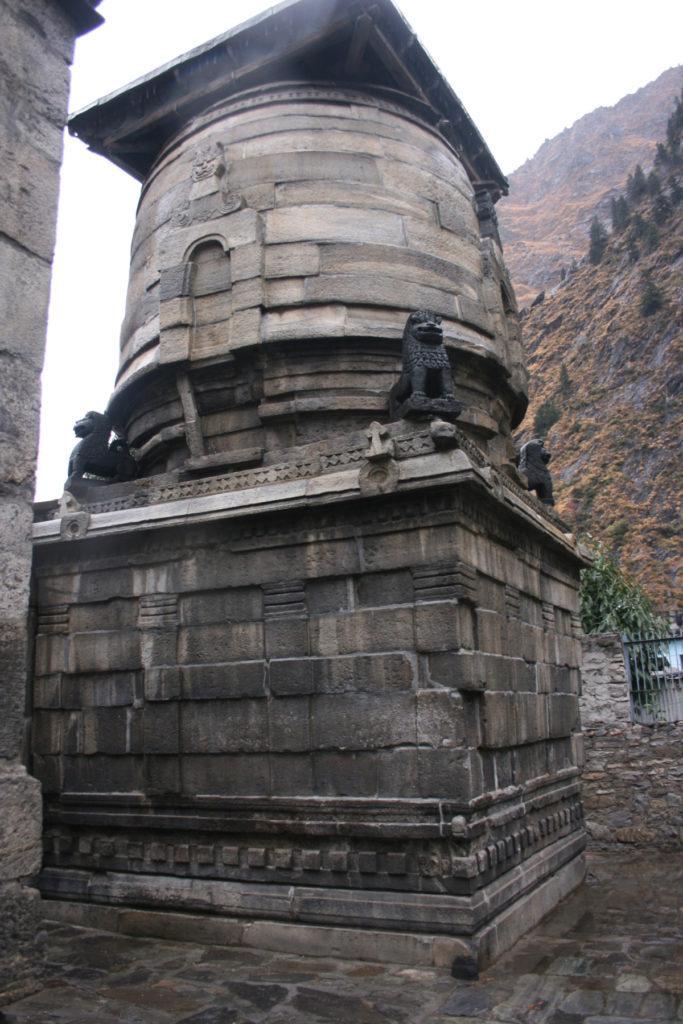
Yogabadrī temple, Pandukeshwar
The Yogabadrī temple is so different from the Gaṇeśa shrine and all other monuments in the Central Himalayas
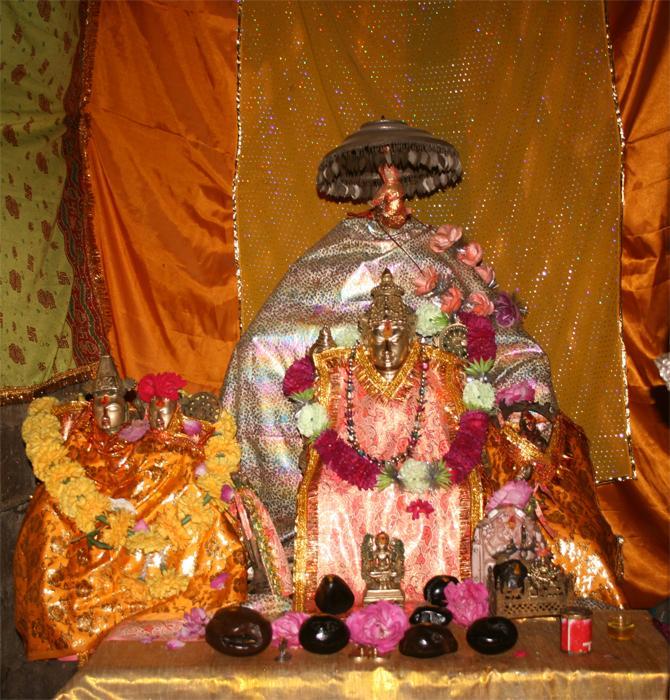
Yogdhyan Badri Temple Architecture
The Yogabadrī temple is so different from the Gaṇeśa shrine and all other monuments in the Central Himalayas that it baffled Kanti Prasad Nautiyal, the sole scholar to write about it. He wrote that it was “either influenced by the Buddhist stupa type because of the proximity of the place to the Tibetan region or it may have been just a reproduction of the Pala temple.” Close examination of the Yogabadrī temple’s structural components, however, shows its affiliation with temples in southern India, suggesting that it is a Drāviḍa alpa vimāna.
The foundational moldings of Yogabadrī’s square-plan vimāna appear in the following sequence: minor projecting molding (kṣudropāna) lotus-formed molding (padmopāna), recessed band (antarita), tri-faced torus molding (tripaṭakumuda), recessed molding (golapāda) with block-projections (galas) and with crocodilian creatures (makaras) only at the corners, upper-fillet molding (ūrdhvakampa), minor molding (upāna), and oversailing fillet (mahāvājan). In contemporaneous Drāviḍa alpa vimānas in Tamil Nadu, this sequence constitutes the molded base (adhisthāna), and it invariably is set beneath the garbhagṛha’s floor level. Furthermore, in Tamil Nadu, a water chute (praṇāla) typically cuts through the mahāvājan or equivalent crowning course. The Yogabadrī temple’s floor level, however, is sited in the middle of this set of molding courses, a feature externally indicated by the water chute that cuts through the tripaṭakumuda.
A wall frieze punctuated by rather plain pilasters rises above the temple’s foundational mahāvājana course. The uppermost portion of the wall frieze features a row of galas, which are sheltered by a heavy kapoṭa decorated with gavākṣas (dormer-window motifs) with trefoil finials. Sculptures of sejant lions are set on the four corners of the plank molding (pratis). Calling to mind a sculptural typology and an architectural convention first seen at the seashore temple at Mamallapuram, they symbolically protect the temple, weigh down a course carved with a diamond-and-pearl pattern, and safeguard the vulnerable junctures of walls.
A rectangular, enclosed front hall (guḍhamaṇḍapa) fronts the vimāna. It shows the same base molding courses as the vimāna, but its wall frieze is plainer. Beaten copper sheets clad an older roof composed of sloping stone slabs. A short flight of stairs contained by a banister—reminiscent of the curvaceous balustrades of so many Drāviḍa temples in Tamil Nadu—leads devotees toward an unornamented portal. Stepping through this portal, one enters a dark hall, with a door at its far end leading into the garbhagṛha. A cluster of hitherto unpublished metal images of Viṣṇu and his celestial retainers are enshrined in this exalted space (fig. 18). The largest of these images, a golden sculpture depicting Viṣṇu seated in a cross-legged meditative posture (padmasana), appears to date from the time of the temple’s construction in the ninth or tenth century.
(Details taken from here)
Legend / Local stories
Legends believe King Pandu was living with his wives Kunti and Madri in the Pandukeshwar after giving his throne to his elder brother Dhritrashtra. One day Pandu went on hunting in the jungle and unintentionally killed a sage making love in deer form. While the sage was dying cursed Pandu that to be unable to make love with anyone and if he does so, he will die instantly.
To get cleanse of the sin of killing of sages, Pandu installed the bronze image of Vishnu in the Yogadhyan Badri shrine and mediated. Meanwhile, Kunti and Madri gave birth to Pandavas through yogadhyan. Once in a while Pandu got attracted to Madri who was taking bath in the Alaknanda river. Soon Pandu died due to the curse of the sage.
During the 12 years of exile, Pandavas visit Pandukeshwar and perform the funeral of their father Pandu. Here, Arjun also meditated during the exile period and get a blessing from Indra. Pandavas also built a Lord Vasudev temple having idols of Lord Vishnu, Goddess Laxmi, and Madri.
Best Time To Visit Pandukeshwar
Pandukeshwar is open all around the year and can be visited all around the year. The ideal time to visit Pandukeshwar is from April to June and September to November.
Yogdhyan Badri Photo Gallery
How to Reach Yogdhyan Badri:
Pandukeshwar is located at mid way between Joshimath and Badrinath. Situated at a distance of 18 kms from Joshimath and 23 km from Badrinath, Pandukeshwar can be reach by sharing jeep or hiring taxi from Joshimath.
By Air
The nearest airport is Jolly Grant Airport in Dehradun, which is about 282 km from Yogdhyan Badri which is situated in Pandukeshwar. Taxi and bus services are available from Dehradun airport to Pandukeshwar.
By Train
Rishikesh Haridwar & Dehradun all have Railway Stations. The nearest rail-head from Yogdhyan Badri is Rishikesh (255 km approx). From Rishikesh, one can take a bus/Taxi to reach Yogdhyan Badri.
By Road
Yogdhyan Badri is situated in Pandukeshwar(Badrinath-Rishikesh national highway). State transport buses play regularly between Pandukeshwar and Rishikesh (275 km). Local Transport Union Buses and State Transport buses operate between Pandukeshwar and Rishikesh (275 km), Haridwar (297 km), Dehradun (318 km), and Delhi (520 km).

